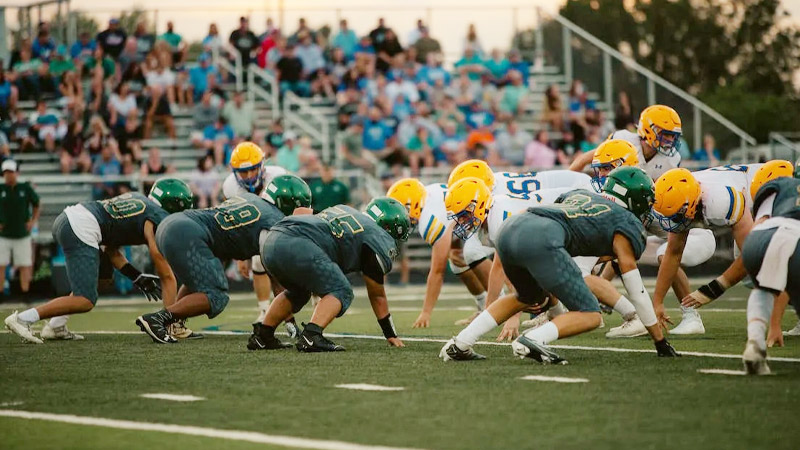When it comes to American football, defenses play a crucial role in determining the outcome of games. Among the myriad of defensive formations, the 4-3 front defense stands as a formidable and versatile option that has been a staple in the sport for decades.
In this blog post, we will dive into the intricacies of the 4-3 front defense, exploring its responsibilities, advantages, and potential drawbacks.
Whether you are a devoted football fan seeking to deepen your understanding of defensive strategies or a player or coach looking to refine your defensive approach, this guide on the 4-3 front defense will be a good resource. So, stay focused.
What is Football 4-3 Front Defense
The 4-3 front defense is a popular formation used in American football, designed to stop the opposing team’s running game and apply pressure on the quarterback. In this setup, four defensive linemen line up across the line of scrimmage, with three linebackers positioned behind them.
The formation’s primary objective is to maintain a strong presence in the trenches and control the gaps on the line, making it difficult for the offense to establish a ground game.
Meanwhile, the linebackers play a versatile role, covering both run support and pass defense responsibilities. The 4-3 front allows for flexibility in defensive schemes, enabling coaches to adjust to various offensive strategies and create opportunities for blitzes and coverage schemes.
Responsibilities of Football 4-3 Front Defense
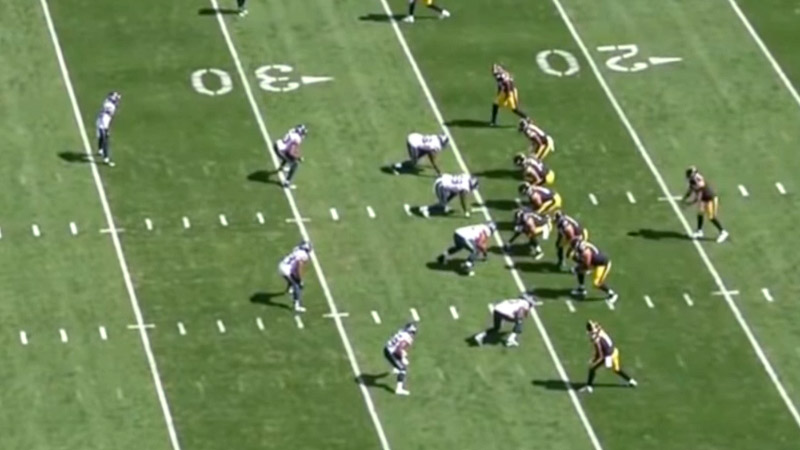
In the 4-3 front defense, each position group has specific responsibilities to execute the overall defensive strategy effectively. Here are the key responsibilities of each position within the 4-3 front:
Defensive Linemen (4 players)
Defensive Ends (DE)
Their primary responsibility is to set the edge of the defensive line, preventing outside runs and containing the quarterback in the pocket during passing plays. They must also apply pressure on the quarterback to disrupt passing plays.
Defensive Tackles (DT)
The defensive tackles focus on controlling the interior gaps and stopping inside running plays. They need to be strong and capable of shedding blockers to disrupt the offensive line and create penetration into the backfield.
Linebackers (3 players)
Middle Linebacker (MLB)
Often referred to as the “Mike” linebacker, this player is the leader of the defense. They are responsible for making defensive calls, coordinating the front seven, and reading the offense’s plays. Their main task is to stop inside runs and provide support in pass coverage over the middle of the field.
Weak-Side Linebacker (WLB)
Also known as the “Will” linebacker, this player is usually the most athletic linebacker. They have the responsibility of covering the weak side of the formation, including chasing down running plays to the outside and covering running backs or tight ends in pass coverage.
Strong-Side Linebacker (SLB)
The “Sam” linebacker is positioned on the strong side of the formation. Their primary role is to set the edge against runs to their side and provide support in pass coverage, often matching up against tight ends or assisting in zone coverage.
Practice the Strategies of 4-3 Front Defense
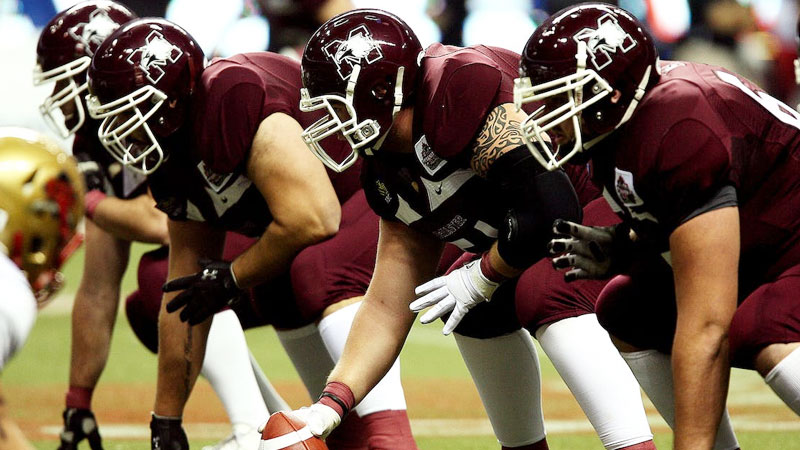
Practicing the strategies of the 4-3 front defense involves a combination of individual drills and team-oriented exercises to improve the players’ skills and coordination. Here are some key practice strategies for the 4-3 front defense:
Gap Control Drills
Work on individual defensive linemen techniques to control specific gaps in the line of scrimmage. Use blocking sleds or dummies to simulate offensive linemen, and have the defensive linemen practice reading and reacting to different run plays.
Edge Setting and Containment
Train the defensive ends to maintain outside leverage, preventing running backs from getting to the sideline. Practice “force” techniques to funnel the ball carrier back inside, where other defenders can help make the tackle.
Interior Disruption
Have the defensive tackles work on shedding blocks and penetrating the offensive line to disrupt running plays and apply pressure on the quarterback during passing plays.
Linebacker Reads and Reactions
Set up drills to improve the linebackers’ ability to read the offensive play, diagnose runs or passes, and react quickly to fill gaps or drop into pass coverage.
Coverage Skills
Train the linebackers and defensive backs to effectively cover their assigned zones in pass defense. Practice man-to-man coverage techniques and zone drops to ensure proper coordination and communication.
Blitz Packages
Implement various blitz packages to add pressure on the quarterback. Practice timing and execution to create confusion and disrupt the opponent’s passing game.
Team Run Defense
Conduct full-team drills to simulate different running plays and focus on the defense’s ability to work together to stop the run effectively.
Team Pass Rush
Practice coordinated pass rush techniques with the defensive line and linebackers working in unison to collapse the pocket and create pressure on the quarterback.
Communication and Recognition
Emphasize communication among the defensive players to make quick adjustments based on the offensive formation and play-call. Use film studies to improve players’ recognition of opposing team tendencies.
Scrimmages and Simulated Game Situations
Incorporate full-team scrimmages and situational drills to apply the learned strategies in game-like scenarios.
Regularly evaluating individual player performance and overall defensive cohesion is vital in refining the 4-3 front defense strategies.
Advantages of 4-3 Front Defense
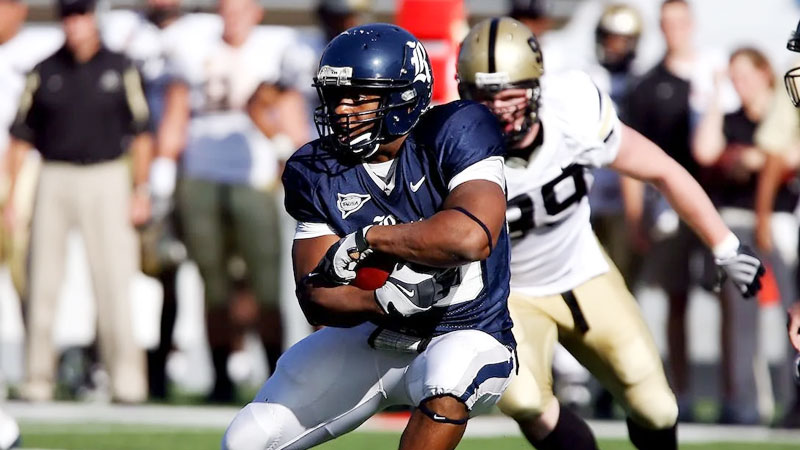
The 4-3 front defense offers several advantages that have made it a popular formation in American football. Some of the key advantages include:
Strong Run Defense
With four defensive linemen and three linebackers, the 4-3 front provides a solid presence in the trenches, making it difficult for opposing teams to establish a successful running game. The defensive linemen can control gaps effectively, and the linebackers have the versatility to fill and read gaps quickly.
Versatility
The 4-3 front allows for flexibility in defensive play-calling. The linebackers can be utilized in various roles, including run support, pass coverage, and blitzing. This adaptability makes it easier for coaches to adjust their defensive strategy based on the opponent’s offensive strengths and weaknesses.
Pass Rushing
The formation’s four defensive linemen provide a strong pass rush. The front four can generate pressure on the quarterback without the need for frequent blitzes, which, in turn, helps the defense maintain better coverage in the secondary.
Balance in Pass Coverage
The 4-3 front typically provides a good balance between pass coverage and stopping the run. The three linebackers and four defensive backs can cover various passing routes and defend against short, intermediate, and deep passes effectively.
Linebacker Flexibility
The three linebackers in the 4-3 front are often athletic and versatile players who can cover a wide range of offensive threats. They can cover tight ends, running backs, and even slot receivers in pass coverage, and they are strong enough to contribute significantly to stopping the run.
Stops Outside Runs
The defensive ends in the 4-3 front are responsible for setting the edge, making it challenging for opposing running backs to turn the corner and break outside runs. This containment helps keep plays in front of the defense and prevents big gains on the perimeter.
Simplicity and Familiarity
The 4-3 front is a relatively simple defensive formation that most players are familiar with, even at the high school and college levels. The straightforward alignment and responsibilities can lead to quicker player development and execution.
Ease of Substitution
The 4-3 front defense facilitates ease of substitution since the base formation typically employs four defensive linemen. This allows coaches to rotate players and keep them fresh during games, potentially reducing fatigue and injuries.
Disadvantages of 4-3 Front Defense
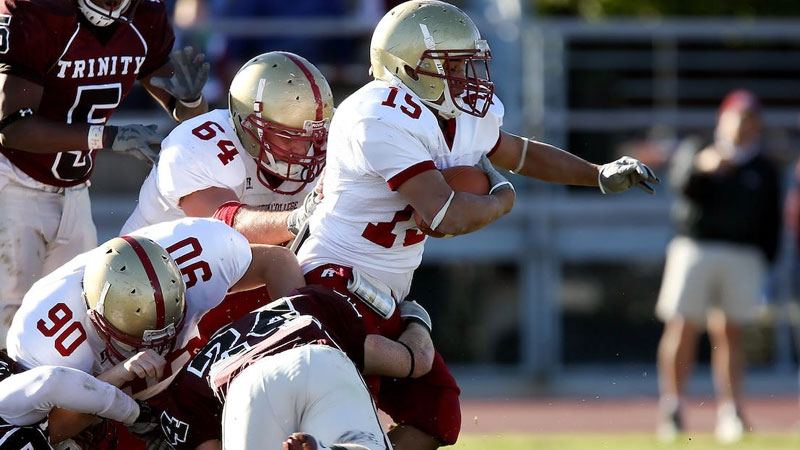
While the 4-3 front defense has its advantages, it also has some potential disadvantages that coaches and teams should be aware of:
Vulnerability to Spread Offenses
The 4-3 front may struggle against spread offenses that utilize multiple wide receivers and stretch the defense horizontally. With only three linebackers, it can be challenging to cover all the passing options effectively, especially if the linebackers are not particularly strong in pass coverage.
Limited Blitzing Options
Compared to some other defensive formations, the 4-3 front may have fewer options for creative blitz packages. The four-man defensive line typically provides the primary pass rush, and while linebackers can blitz, it might not be as varied or unpredictable as other formations like the 3-4 defense.
Size and Strength Requirements
The success of the 4-3 front defense often depends on having strong and physical defensive linemen who can control gaps and occupy blockers effectively. Smaller or less physically imposing linemen may struggle to execute the formation’s primary objective of stopping the run.
Potential Mismatch against Power Running Teams
Teams that heavily rely on power running plays and feature big, physical offensive lines may be better equipped to exploit the 4-3 front’s potential weaknesses in run defense. In such cases, the lack of an extra interior defender (as in the 3-4 defense) can be a disadvantage.
Pass Coverage Limitations
While the 4-3 front provides a good balance in pass coverage, it might not offer the same level of pass defense as formations with more defensive backs (e.g., the 4-2-5 or 3-3-5). Against teams with prolific passing attacks, the 4-3 front could be more susceptible to giving up big plays through the air.
Dependency on Linebacker Play
The success of the 4-3 front defense heavily relies on the performance of the linebackers, particularly their ability to read and react to offensive plays. If the linebackers are not strong tacklers or struggle in coverage, it can put a strain on the entire defensive unit.
Matchup Considerations
The effectiveness of the 4-3 front defense can vary based on the personnel and strengths of the opposing offense. Coaches must carefully evaluate the matchups and tailor their defensive game plan accordingly.
Lack of Hybrid Role Players
In certain modern defensive schemes, teams might prefer hybrid defenders who can play multiple positions. The traditional 4-3 front may not fully utilize the potential of these versatile players.
Despite these disadvantages, the 4-3 front defense continues to be widely used and can be very effective when well-coached and executed by skilled players.
FAQs
What is the 4-3 front defense, and how does it differ from other defensive formations?
The 4-3 front defense is a popular formation in American football, consisting of four defensive linemen and three linebackers. It differs from other defensive formations like the 3-4 defense, which employs three defensive linemen and four linebackers.
The 4-3 front is characterized by a strong presence in the trenches, providing a balanced approach to defending both the run and pass. Its versatility lies in the linebackers’ ability to cover a wide range of offensive threats while maintaining a solid pass rush with the four defensive linemen.
What are the key responsibilities of players in the 4-3 front defense?
In the 4-3 front defense, each position group has specific responsibilities:
- Defensive Linemen: The defensive ends focus on setting the edge and pressuring the quarterback, while the defensive tackles control interior gaps and stop inside running plays.
- Linebackers: The middle linebacker (MLB) leads the defense, stopping inside runs and providing support in pass coverage. The weak-side linebacker (WLB) covers the weak side and assists in pass defense, while the strong-side linebacker (SLB) sets the edge and covers the strong side.
What advantages does the 4-3 front defense offer over other defensive schemes?
The 4-3 front defense offers several advantages, including strong run defense, versatility, balanced pass coverage, and effective pass rushing. Its flexibility allows coaches to adjust to different offensive strategies easily.
With four linemen providing the primary pass rush, it can maintain better pass coverage with fewer blitzes. The formation’s balance makes it an attractive choice for many football teams.
How do teams practice the strategies of the 4-3 front defense to improve their performance?
Teams practice the 4-3 front defense through a combination of individual drills and team-oriented exercises. They work on gap control, edge setting, interior disruption, linebacker reads and reactions, and pass coverage skills.
Coaches implement various blitz packages and conduct full-team drills to simulate game situations. Film study is also crucial for players to recognize opposing team tendencies and make quick adjustments on the field.
Are there any potential disadvantages or vulnerabilities associated with the 4-3 front defense, and how can teams mitigate them?
While effective, the 4-3 front defense might face challenges against spread offenses and power running teams. Its limited blitzing options could be a drawback against well-prepared passing attacks.
To mitigate these disadvantages, teams can focus on player development and communication, tailor their defensive game plans based on matchups, and incorporate hybrid role players when appropriate.
Wrapping Up
The 4-3 front defense has proven itself as a reliable and versatile formation in American football, offering a strong run defense, effective pass rush, and balanced pass coverage.
Its ability to control the line of scrimmage and adapt to various offensive strategies has made it a favorite among coaches and players alike. While it has some potential disadvantages, these can be mitigated through strategic planning and player development.
As football enthusiasts, understanding the nuances of the 4-3 front defense empowers us to appreciate the complexities of the game and the strategic decisions that shape its outcomes.
By studying this classic defensive formation, we gain a deeper appreciation for the intricate dance between offense and defense that defines the sport we love. Best wishes.

